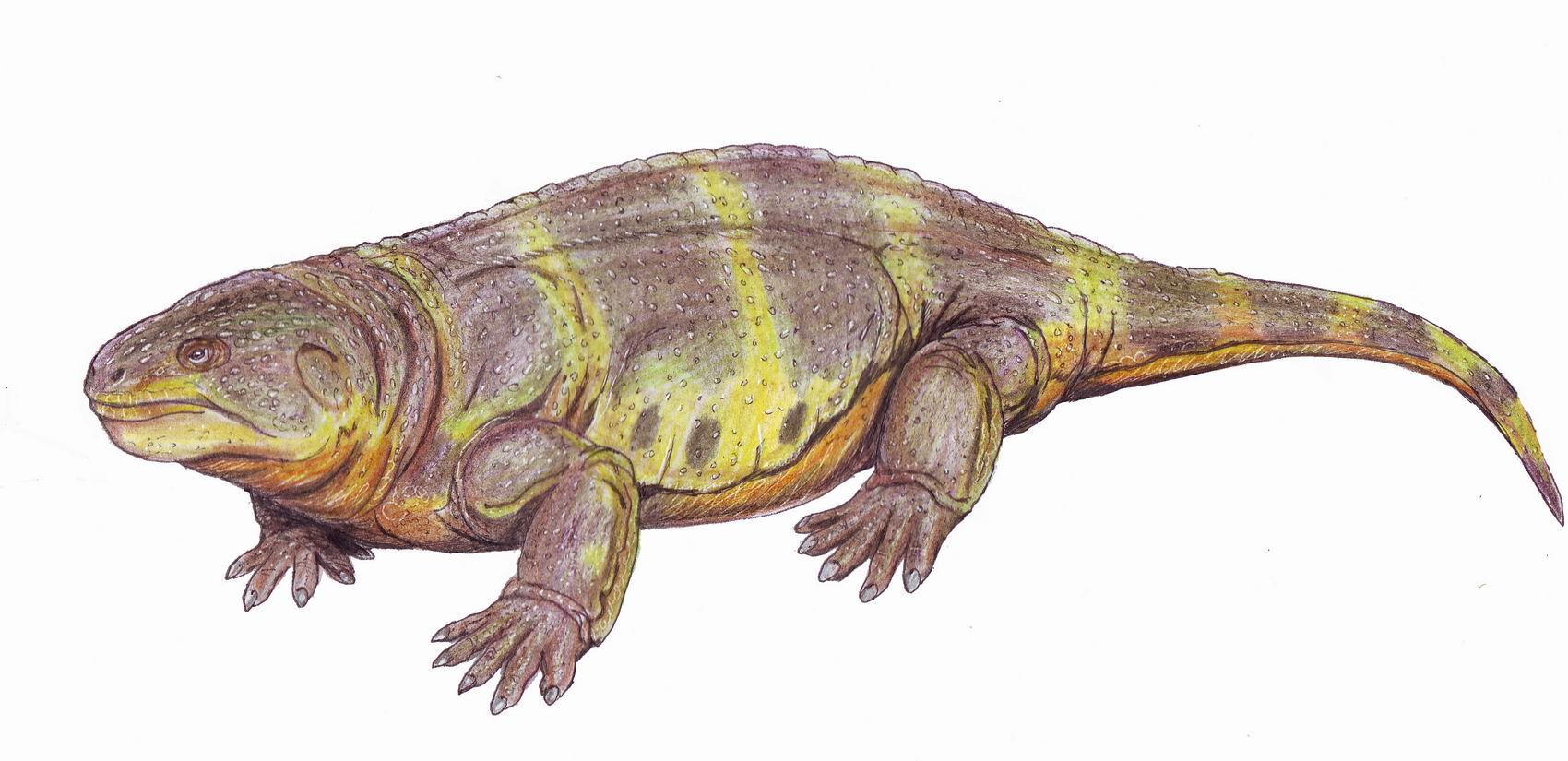Diasparactus on:
[Wikipedia]
[Google]
[Amazon]
''Diasparactus'' is an extinct genus of
Permo-Carboniferous Vertebrates from New Mexico, p17-35. Retrieved 2011-09-11.
 In 1910, E. C. Case described ''Diasparactus zenos'' from a few vertebrae found in
In 1910, E. C. Case described ''Diasparactus zenos'' from a few vertebrae found in
diadectid
Diadectidae is an extinct family of early tetrapods that lived in what is now North America and Europe during the Late Carboniferous and Early Permian in Asia during the Late Permian. They were the first herbivorous tetrapods, and also the first ...
reptiliomorph
Reptiliomorpha (meaning reptile-shaped; in PhyloCode known as ''Pan-Amniota'') is a clade containing the amniotes and those tetrapods that share a more recent common ancestor with amniotes than with living amphibians ( lissamphibians). It was de ...
s, a group quite closely related to the amniote
Amniotes are a clade of tetrapod vertebrates that comprises sauropsids (including all reptiles and birds, and extinct parareptiles and non-avian dinosaurs) and synapsids (including pelycosaurs and therapsids such as mammals). They are disti ...
s, and paralleling some of their features. Like all advanced diadectids, ''Diasparactus'' was a herbivore
A herbivore is an animal anatomically and physiologically adapted to eating plant material, for example foliage or marine algae, for the main component of its diet. As a result of their plant diet, herbivorous animals typically have mouthpart ...
, though not as large as its more well known relative ''Diadectes
''Diadectes'' (meaning ''crosswise-biter'') is an extinct genus of large reptiliomorphs or synapsids that lived during the early Permian period (Artinskian-Kungurian stages of the Cisuralian epoch, between 290 and 272 million years ago). ''Diade ...
''.
In ''Diasparactus'', the spines of the dorsal vertebrae are higher than in other genera in the family.A Description of a nearly complete skeleton of ''Diasparactus zenos'' CasePermo-Carboniferous Vertebrates from New Mexico, p17-35. Retrieved 2011-09-11.
History
 In 1910, E. C. Case described ''Diasparactus zenos'' from a few vertebrae found in
In 1910, E. C. Case described ''Diasparactus zenos'' from a few vertebrae found in New Mexico
)
, population_demonym = New Mexican ( es, Neomexicano, Neomejicano, Nuevo Mexicano)
, seat = Santa Fe
, LargestCity = Albuquerque
, LargestMetro = Tiguex
, OfficialLang = None
, Languages = English, Spanish ( New Mexican), Navajo, Ker ...
.E. C. Case. 1910. New or little known reptiles and amphibians from the Permian (?) of Texas. ''Bulletin of the American Museum of Natural History'' 28:163-181 In 1911, a largely intact skeleton was found in the same area. The vertebrae agreed with the described type species and the new find was considered likely to be the same species. The total length of the animal when restored was 1.35 metres.
Description
The skull measured 16.7 centimetres. It was in poor condition but was similar to that of '' Diadectes lenius'' and '' Animasatirus carinatus''. Thenare
A nostril (or naris , plural ''nares'' ) is either of the two orifices of the nose. They enable the entry and exit of air and other gasses through the nasal cavities. In birds and mammals, they contain branched bones or cartilages called tur ...
s and orbit
In celestial mechanics, an orbit is the curved trajectory of an object such as the trajectory of a planet around a star, or of a natural satellite around a planet, or of an artificial satellite around an object or position in space such as a p ...
s were in similar positions and there were fourteen teeth with possibly a rudimentary fifteenth, a dentition typical of the family. The vertebrae, ribs and limbs were described in detail. The carpals were mostly present and still in position - the best preserved examples for a diadectid then found. The foot was broad and strong with short phalanges. The feet and limbs supported the view that this animal was a marsh-dweller and probably a slow-moving herbivore.
References
{{Taxonbar, from=Q3014261 Diadectids Cisuralian tetrapods of North America Permian geology of New Mexico Paleontology in New Mexico Fossil taxa described in 1910 Taxa named by Ermine Cowles Case